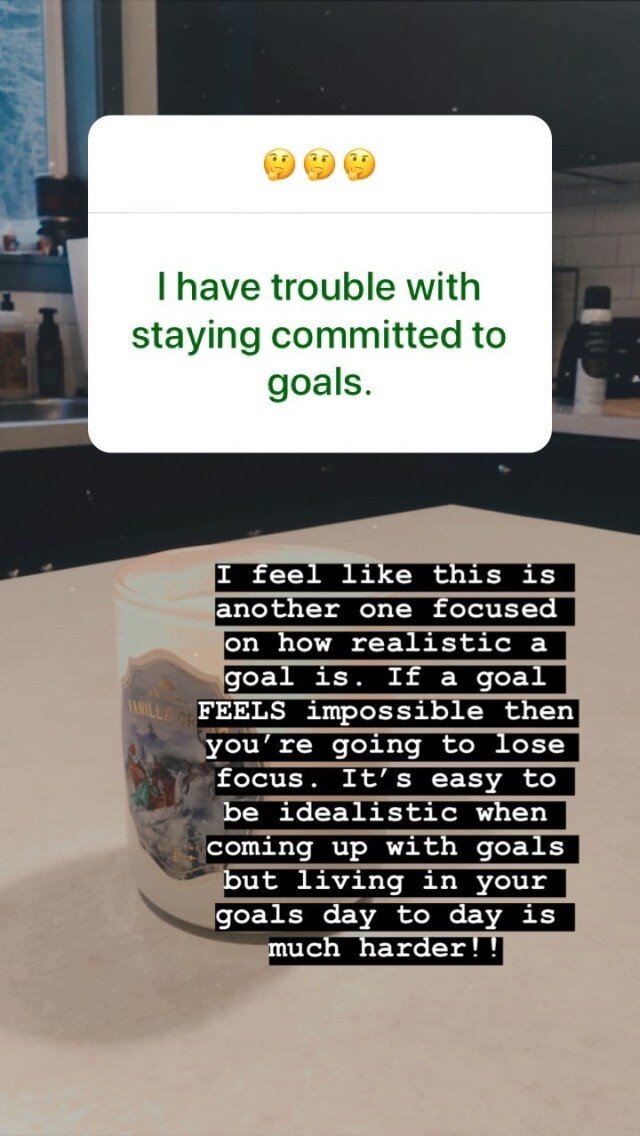Happy New Year!
Woof! What a year 2020 was, huh?
Have you felt like we’ve been saying that since, like, 2015? It feels like the last 5 years have been “the worst year ever” and we all hopefully look towards the next one. (Although, to be fair, I think 2017 and 2018 have been my two best years on record in the last 5 or so.) I wonder when this cultural shift happen, or do you think this is something that always happens during times of social upheaval?
No matter what: 2020 is behind us.
What did you learn this year?
And what of those lessons do you want to carry in 2020?
For me, my main takeaway from 2020 is this: I can do challenging things. I need to learn to say “no” and set boundaries. I need to start being intentional with my time to avoid burnout.
All good things.
This year, I decided to not set strict (or SMART) goals for 2021. That feels like maaaaybe just a little too much. (On this note—is anyone bracing themselves for March 2021? I feel like March 2020 has become the litmus for when things really changed.)
Instead, in 2021, I’m setting intentions. And that works because my word for this year is, well, intention. Be intentional. Have intentions.
We’re all learning how to grow as people in this new world of ours. That’s sort of the fun thing, isn’t it? That we’re all figuring out what’s normal now, what we can reasonably achieve, how we can impact others in real time, right along each other. There are no experts, no one who is ahead of the curve. We’re all flying blind beside each other. It’s kind of a nice feeling.
For the sake of public pressure (yes, I am that kind of person—I need to tell other people my intentions or goals to make them “real”), here are my intentions for this year.
Drink more water. My husband and I often joke that I’m a succulent. To be completely honest, I don’t drink much of anything all day. I will have a cup of coffee in the morning and then not really take a drink of anything else until the afternoon. At night, I try to drink water, but mostly just so my mouth doesn’t get dry when I sleep. This is a bad habit and I’m an adult, not a succulent, and I have to start trying to drink water.
Redo the Curated Closet. I bought the Curated Closet Workbook last year and was working on it in February and March. Then, obviously, I didn’t leave my house for 6 months? I’m working on redoing it and learning a bit more about myself in the process. It’s one of my goals to also start posting outfit photos on my Instagram again. Big scary!
Spend more time on my hobbies. Like this blog, embroidery, reading, and journaling. 2020 was a year where I worked a ton and it became rapidly clear by around September that I was suffering as a result. I took on too much; I was so burnt out I couldn’t even start a book, let alone finish one; I started and didn’t finish probably 20 embroidery projects. However, once I took a break December 16 and stopped working entirely… I was able to read 4 books, work on an embroidery project, and actually watch a movie without scrolling on my phone. It was really eye opening. Part of this spending more time on my hobbies means also being really strict about work boundaries and giving myself weekends again.
Save money for Disneyland. Isn’t it crazy that in 2020, my husband and I had more disposable income (a combination of me being paid more for my work and us not really being able to go anywhere for 6 months when I was making said bank), and yet we literally couldn’t do any of the things we always wanted to do once we had more disposable income? What a trip. Anyway, if Disneyland is ever able to open again, we are going and I am saving money in order to give myself the trip of my dreams. C’mon vaccine!
That’s it! Those are my only intentions for 2021. I’m keeping it simple this year, y’all: hobbies, fashion, not being a succulent, and going to Disneyland.
Tell me: what are your intentions (or goals) for this year? What do you want to achieve?










